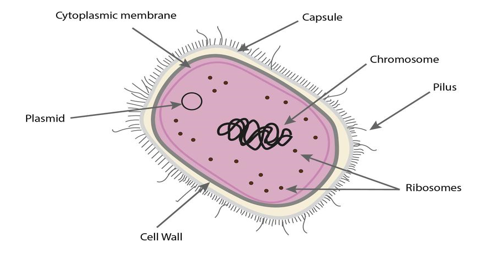Haemophilus influenzae Serotypes
Haemophilus influenzae have structurally diverse capsular polysaccharides which are an additional protective layer shielding the bacterium from the host immune system, as shown below. These polysaccharides determine the heterogeneity of the serotypes which in turn contribute to virulence, disease severity and mortality rates.

Bacterial cell with capsule
H. influenzae can be broadly classified as encapsulated (typeable) or unencapsulated (non-typeable).
- Non-encapsulated (non-typeable, NTHi)
Although non-encapsulated Haemophilus influenzae strains can cause invasive infections, NTHi are more frequently associated with mild mucosal infections that include ear infections, bronchitis and sinusitis.
- Encapsulated (typeable) H. influenzae
Encapsulated strains are further classified into six serotypes (a, b, c, d, e and f) and are responsible for invasive infections. These serotypes are antigenically and biochemically distinct and can be detected based on agglutination reactions to serum specific to them. Margaret Pittman’s work in the 1930s led to the identification and characterisation of these encapsulated strains.
Within the species, seroype b (Hib) accounts for 95% of meningitis cases and other invasive bacterial infections in children and adults. A small proportion of Haemophilus influenzae infections are caused by seroype a and f. The incidence of disease due to serotype a is increasing particularly in the USA.
In 2017, the incidence rate was 0.18 for Hib, 1.7 for non-b H. influenzae and 1.7 for non-typeable H. influenzae (NTHi) per 100,000 population of children younger than 5 years of age. Among adults 65 years of age and older, the incidence of invasive NTHi was 6.2 per 100,000. The infectious agent in acute otitis media and sinusitis in children is NTHi in around 40% of cases and it is also the causative factor in the recurrence of otitis media in that age group.
The maintenance of routine surveillance systems that can identify H. influenzae serotypes is important as it has direct implications on vaccine development and impacts. Vaccines are only effective against their specific serotype and at the time of writing (2021), only vaccines targeting serotype b were available.



![Image de [i]Haemophilus influenzae[/i] au microscope](/sites/default/files/styles/feature_box/public/2021-01/hib.png?itok=YvmalvuU)




